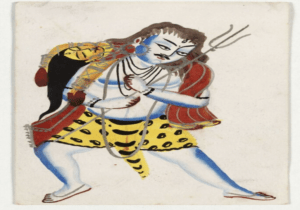- This topic is empty.
-
AuthorPosts
-
October 19, 2023 at 1:25 pm #1492Up::0
Indian culture and traditions are deeply absorbed in myths and stories, where puranic tales have the utmost importance in religious and cultural values. The Puranas or ‘ancient lores’ of Hindu mythology are the comprehensive body of sacred literature that set down traditional legends of gods, demons, sages, and kings highlighting subjects like cosmology, and philosophy. Attributed to varied sources and handed down orally records in writing by various learned scholars who scripted and re-scripted these hindu literature.
Across generations, these Mahapuranas and Upapuranas remain vital to the culture, holding testimony to the very concept of modern evolution.
Within Indian traditions, there are several stories linked with a single god or goddess.
In the case of delineating the 51 sacred spaces where Shakti resides, the origin of these Shakti peetha can be traced. Where Devi Sahastranam traces the avatars of Shakti and transformations into.
However, mapping the history of these 51 sacred Shakti adobes, tracing the history and understanding the importance of the story of Daksha Yagna finds remark in Vayu Purana, Skanda Purana, Kurma Purana, Harivamsa Purana, Padma Purana, Shiv Purana, and Matsaya Purana.
Daksha was one of the four sons of Brahma and Aditi. In a story that states that Daksha had 24 daughters each one was a different aspect of Shakti. Sati, also known as Dakshayani, was his youngest daughter who is described as being very beautiful and wishes to marry Shiva but it’s her devotion that won Shiva’s heart. According to the Purana, Sati withdraws herself from all luxuries and is willing to devote her life to disciplines of erratic life and worship shiva. Despite Daksha’s unwillingness, their marriage was conducted with Brahma as a priest.
Soon after her marriage, according to Bhagavat Purana, Daksha along with Mariachi, one of the saptarishis and also the founder of Vedanta organized a massive yagna where all the devas, powerful sages, and his sons-in-law were invited. The tension between Shiva and Daksha was sown when everyone in the assembly got up and greeted the Daksha but not Shiva. Who was enraged as his ego was squashed by Shiva not rising in his presence.
Over time Brahma declaring Daksha to be first among the patriarchs boosted his ego adding value to his arrogant nature, soon after this elevation he decided to conduct the biggest sacrifice of all.
As preparation begins, Sati views the invitation of many celestial participants to the yagna, and is amazed by her father’s act of not inviting her and Shiva.
Sati, however, declared her wish and went uninvited. On reaching, Daksha Humiliated her and Shiva, and in absolute discomfiture, she sacrificed herself in the fire.
When Shiva perceived Sati’s self-immolation he took the form of Veerbhadra, placing her body on his shoulder and embarking the Tandav.
So worried about the gods, Narayan himself using his Sudarshana Chakra, cut the body of Sati into various parts. With the time which is known to be called 51 sacred Shakti Peetha, where sati body parts fell.

The Sanskrit word ‘Peetha’ means seat or dwelling. In Shakti Peethas it is the sacred space where the Supreme goddess is found seated.
These sacred sites by scholars are associated with 51 alphabets of the Sanskrit language as well.
Since classical times the manifestations of these forms of devi in many have been associated with the iconography of the Shakti Peetha as a site of immense power and energy. Each has its respective modes of rituals as these peethas are specific to the parts of the sati’s body though rituals differ from region to region.
However, devotees enter these petha through their understanding of great goddesses.
Attachments:
You must be logged in to view attached files. -
AuthorPosts
- You must be logged in to reply to this topic.